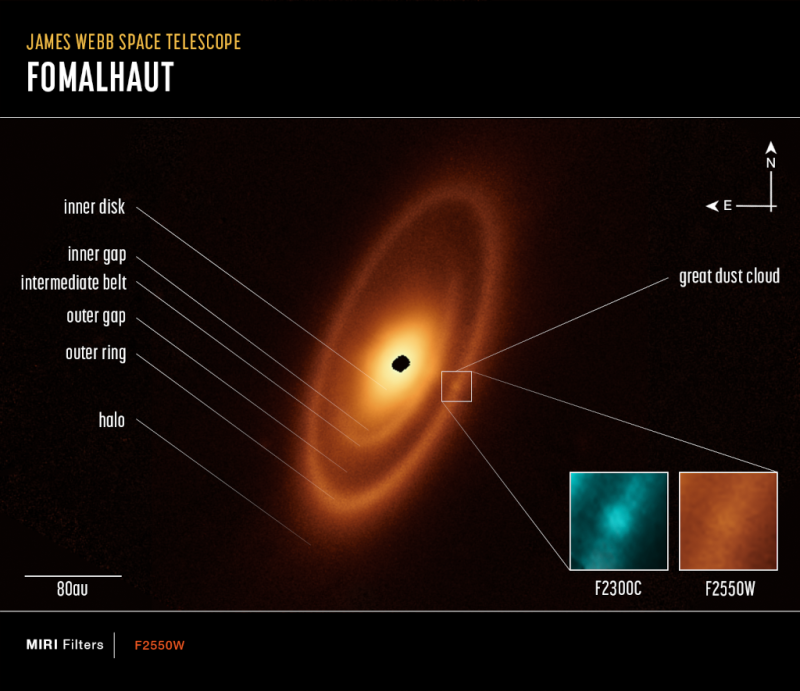
|
Credit & Copyright: NASA,
ESA,
CSA,
Processing: Andrös Göspör (Univ. of Arizona),
Alyssa Pagan (STScI),
Science: A. Göspör (Univ. of Arizona)
et al.
Explanation:
Fomalhaut
is a bright star, a 25 light-year
voyage
from planet Earth in the direction
of the constellation
Piscis
Austrinus.
Astronomers first
noticed
Fomalhaut's excess infrared emission in the 1980s.
Space and ground-based telescopes
have since
identified the infrared emission's source as a disk of dusty
debris surrounding the hot, young star
related to the ongoing formation of a planetary system.
But
this sharp infrared image
from the James Webb Space Telescope's MIRI camera
reveals details of Fomalhaut's debris disk never before seen,
including a large dust cloud in the outer ring that is possible
evidence for colliding bodies,
and
an inner dust disk and gap likely shaped and
maintained by embedded but unseen planets.
An
image scale bar in au
or astronomical units, the average Earth-Sun distance,
appears at the lower left.
Fomalhaut's outer circumstellar dust ring lies
at about twice the distance of our own Solar System's
Kuiper
Belt of
small icy bodies and debris beyond the orbit of Neptune.
|
January February March April May June July August September October November December |
| ||||||||||||||||||||||||||||||||||||||||||||||||
NASA Web Site Statements, Warnings, and Disclaimers
NASA Official: Jay Norris. Specific rights apply.
A service of: LHEA at NASA / GSFC
& Michigan Tech. U.
Based on Astronomy Picture
Of the Day
Publications with keywords: Fomalhaut - dust disk
Publications with words: Fomalhaut - dust disk
See also:
